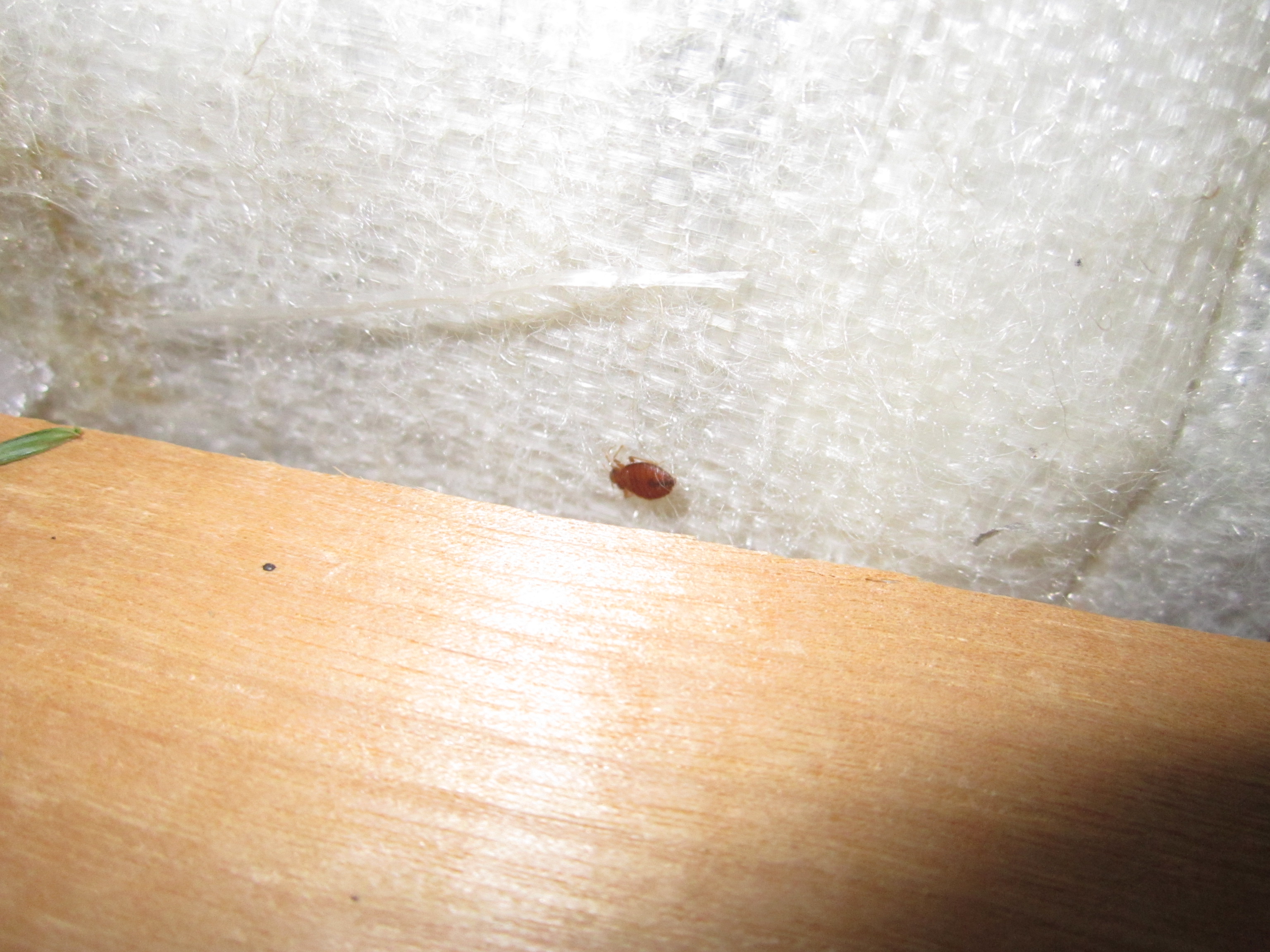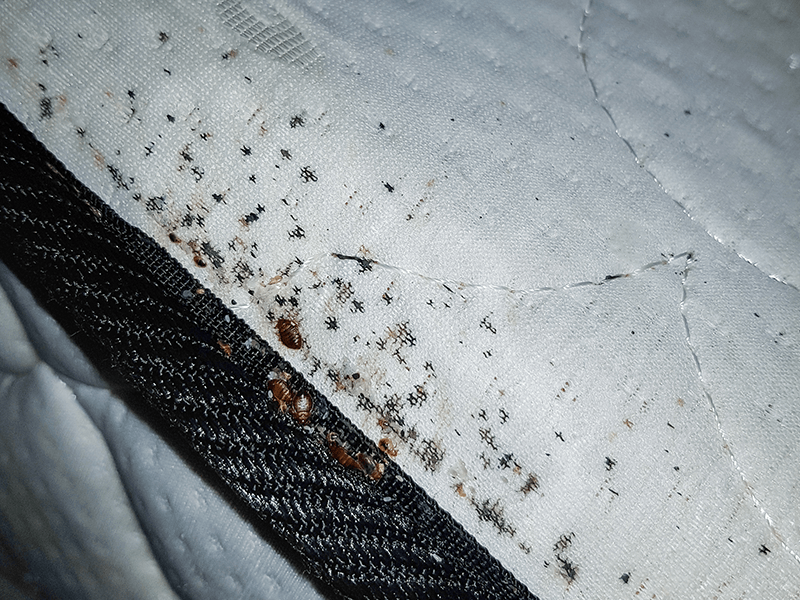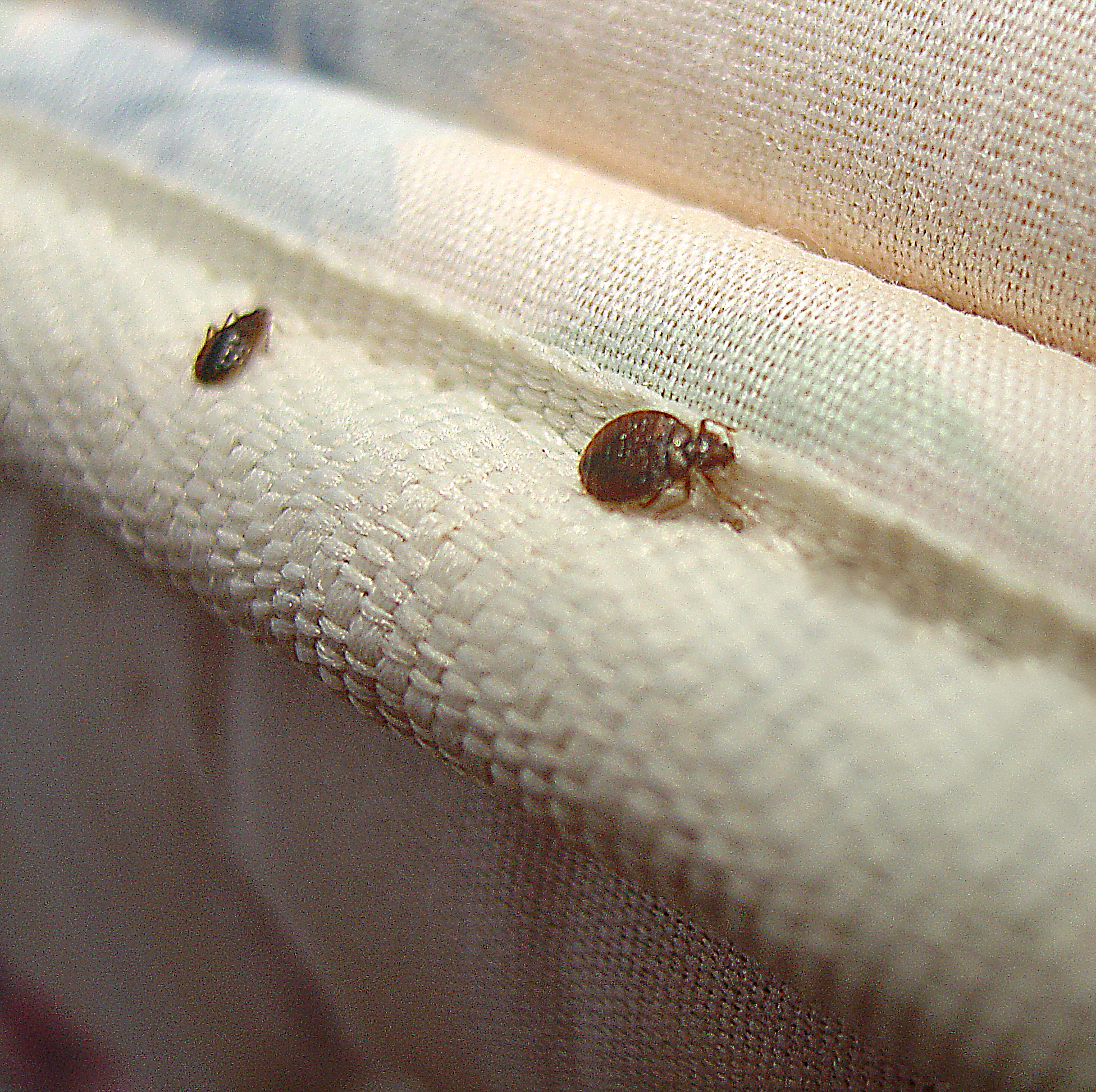To spot bed bugs, inspect your bedding for small black spots and check for rust-colored stains on your sheets or mattress, which can be signs of bed bugs being crushed. Other indicators include live bed bugs and shed skins.
To prevent a bed bug infestation, it’s important to inspect potential harborage sites such as your bed, box spring, and other furniture. Pay attention to any areas where bed bugs can hide such as cracks and crevices. If you suspect a bed bug infestation, take action immediately.
Bed bugs are notorious pests that can cause sleepless nights and discomfort. These small reddish-brown insects feed on human blood and can quickly infest your home if not detected and treated in time. Bed bug infestations can be difficult to control, but early detection is crucial. We will discuss how to spot bed bugs and prevent their infestation. We will cover the signs of bed bug infestation, how to inspect potential harborage sites, and what to do if you find bed bugs in your home. Keep reading to learn more about how to spot bed bugs.

Credit: garbagefinds.com
Understanding Bed Bugs
Bed bugs are small, blood-sucking insects that feed on the blood of warm-blooded animals, including humans. They are named after their preferred habitat, which is crevices and cracks in or near beds or other furniture used for sleeping or resting. Understanding the physical appearance, behavior, and life cycle of bed bugs can help you identify them and prevent potential infestations.
Appearance
Adult bed bugs are typically reddish-brown and flat. They are about the size of an apple seed, with an oval-shaped body and no wings. Before feeding, adult bed bugs are about the size of a pinhead and appear lighter in color. Young bed bugs (nymphs) are smaller and lighter in color, ranging in size from 1.3 mm to 4-5 mm.
Behavior
Bed bugs are nocturnal and prefer to feed at night. They are attracted to warmth and carbon dioxide, which is why they often bite people while they are sleeping. Bed bugs can survive for extended periods without feeding, sometimes up to a year. They are also excellent at hiding in tight spaces, making them challenging to detect and eliminate.
Life Cycle
A female bed bug can lay up to five eggs per day, and up to 500 total during her lifetime. Eggs are about the size of a pinhead and are often deposited in crevices and cracks near beds or other furniture. After hatching, the young bed bugs migrate to nearby resting places, where they can mature and feed. The entire life cycle of a bed bug, from egg to adult, usually takes 2-4 months, depending on temperature and food availability.
Knowing how bed bugs look, behave, and reproduce can help you identify and prevent infestations in your home. Regular inspection of your bed, furniture, and other potential hiding places can help you detect bed bugs early and take measures to eliminate them before they spread.

Credit: www.inspectit1st.com
Signs Of Bed Bug Infestation
Bed bugs can be difficult to spot, but some signs of an infestation include rust-colored stains on bedding or mattresses, small dark spots on sheets or walls, and the presence of live bed bugs. It is important to inspect all potential harborage sites, including your bed and other furniture, if you suspect you have bed bugs.
H3: Rusty or Reddish StainsOne of the most telling signs of bed bug infestation is the presence of rusty or reddish stains on your bed sheets or mattresses. These stains are caused by bed bugs that have been crushed or that have excreted blood after feeding on their host. Keep in mind that these stains may not always be easy to spot, so be thorough in your search. Inspect not only your bedding but also any furniture located near your bed.H3: Dark SpotsAnother indication of bed bug infestation is the presence of dark spots on your bedding or furniture. These spots may appear to be like smears or smudges and are caused by the bed bugs’ excrement. These can often be found on the sides and corners of your mattress, as well as in crevices, cracks, and other areas where bed bugs may be hiding.H3: Live Bed BugsIf you see live bed bugs crawling on your bedding or furniture, you know you have a serious infestation on your hands. Bed bugs are small and reddish-brown in color and are about the size of an apple seed, so they can be difficult to spot. Be sure to check all the potential harborage sites in your home. Focus on your bed, box spring, and other furniture like chairs and sofas.If you have experienced any of these signs of bed bug infestation, it’s critical to seek professional pest control immediately. Remember that bed bugs reproduce at a rapid rate, and infestations grow quickly if ignored. Take action immediately to protect your home and eliminate these pests once and for all.Inspecting For Bed Bugs
Inspecting for bed bugs requires a thorough search of all potential hiding spots. Check all areas around your bed including the mattress, box spring, and other furniture. Look for rusty or reddish stains and dark spots on bedding, which could indicate bed bug excrement.
If you suspect an infestation, seek professional help.
Inspection is the key to detecting and preventing bed bugs. Bed bugs are notorious for being elusive and stealthy pests, often hiding in the smallest of cracks and crevices. Therefore, it’s crucial to inspect all potential harborage sites. This article will guide you on how to inspect your bed, box spring, and other furniture for bed bugs, as well as what to do if you find them.Inspect All Potential Harborage Sites
Bed bugs can hide anywhere in your home, not just on your bed. They can be found in curtains, electrical outlets, furniture seams and cracks, closets, and even behind picture frames. It’s essential to thoroughly inspect these areas you suspect bed bugs might be hiding. Use a flashlight to check every corner and crack. Pay particular attention to any dark spots that look like “pepper” as this could be a sign of bedbugs.Inspect Your Bed
Your bed is an ideal hiding spot for bed bugs since it provides easy access to their favorite food – human blood. Start by peeling back the mattress and inspecting the seams and edges. Look for rust-colored stains, shed skins, and live bed bugs. Next, check the bed frame and headboard, paying special attention to the corners, screw holes, and cracks. If you find any signs of bed bugs, disassemble the bed frame and inspect all its parts thoroughly.Inspect The Box Spring
The next area to inspect is the box spring. Bed bugs can easily infest within the folds and corners of box springs, making them a common breeding ground for these pests. To inspect your box spring, you’ll need to remove it from the bed frame. Look for the same signs of infestation as on the mattress – dark stains and live bugs. You can also use a credit card or scraper to run along the seams to dislodge any bed bugs that may be hiding.Inspect Other Furniture
Other furniture such as dressers, nightstands, and chairs are also potential harborage sites for bed bugs. Inspect each piece thoroughly, checking the seams, joints, and corners. You can also use a vacuum cleaner to clean out any crevices that may harbor bed bugs. After vacuuming, seal the vacuum bag tightly and dispose of it outside.If you find bed bugs in any of these areas, it’s essential to act quickly. Call in a professional to get rid of bed bugs as DIY treatments may not be effective in eliminating these pesky pests. Remember that early detection is key in preventing bed bug infestations, so make it a habit to regularly inspect your home for these pests.
Credit: www.orkin.com
Products That Kill Bed Bugs Instantly
Recognizing the early signs of a bed bug infestation is crucial in preventing it from worsening. Identifying their presence includes inspecting all potential harborage sites, such as your bed, box spring, and other furniture. Products that kill bed bugs instantly, like Hot Shot Bedbug & Flea Fogger or Crossfire Bed Bug Concentrate, can also be used to eradicate these pests.
If you find yourself dealing with a bed bug infestation, you may be wondering how to get rid of these pests as quickly as possible. That’s where products that kill bed bugs instantly come in handy. Here are a few highly effective products to consider:Hot Shot Bedbug & Flea Fogger
This bed bug killer is perfect for getting rid of these pesky pests quickly and easily. The fogger can be easily used in any room in your home, making it a great choice for those dealing with bed bugs in their bedroom, living room, or elsewhere. Other features of this product include:- Easy to use spray-can design
- Effective against bed bugs, fleas, and other pests
- Provides quick results
Crossfire Bed Bug Concentrate
Another option to consider is the Crossfire Bed Bug Concentrate. This highly concentrated product is designed to kill bed bugs on contact, making it an ideal choice for those who need to tackle an infestation quickly. Key features of this bed bug killer include:- Highly concentrated formula for maximum effectiveness
- Kills bed bugs on contact
- Non-toxic and safe for use around children and pets
Harris Large Bed Bug Kit
For those who prefer an all-in-one solution, the Harris Large Bed Bug Kit is an excellent choice. This kit comes with everything you need to get rid of bed bugs in your home, including:- A highly effective bed bug spray
- Bed bug powder for treating cracks and crevices
- Bed bug traps for monitoring and preventing further infestations
Bed Bug Traps
In addition to spray and powder products, bed bug traps are also a highly effective way to get rid of these pests. These traps work by luring bed bugs into a sticky, glue-like substance that prevents them from moving or reproducing. Some popular bed bug trap options include:- Harris Bed Bug Traps
- Raid Bed Bug Detector and Trap
- Bed Bug Blocker Interceptor
Preventing Bed Bugs
To prevent bed bugs, it’s important to know how to spot them. Look for small, dark spots on your bedding that could be digested blood or excrement. Check seams, box springs, and other furniture for signs of the bugs, and if you find them, take immediate action with bug-killing products or professional exterminators.
Preventing bed bugs is essential to avoid getting bitten and to prevent their infestation in your home. These pesky bugs are masters of hiding, and it is challenging to spot them. Therefore, it is crucial to take preventive measures to keep them at bay.Checking For Bed Bugs When Traveling
When traveling, it is crucial to check for bed bugs. Bed bugs can hitch a ride on clothes and luggage, making them easy to spread. To check for bed bugs, start by examining the bedsheets for small black spots, which could be bed bug droppings or bloodstains. Check the seams of the mattress and box spring, the headboard, and the cushions of chairs and sofas for any bugs or eggs. Finally, check all the luggage racks, drawers, and closets to ensure that there are no signs of bed bugs. If the room is infested, ask for a new room or move to a different hotel.Avoid Purchasing Used Furniture
Buying used furniture can be a cheap and cost-effective option, but it can also bring bed bugs into your home. Bed bugs can live in furniture, especially in upholstered furniture. Therefore, it is vital to inspect the furniture thoroughly before purchasing it. Check the seams, crevices, and folds of the furniture for any signs of bed bugs or their eggs. If you suspect bed bugs, avoid buying the furniture and dispose of it correctly.Regular Cleaning And Inspection
Regular cleaning and inspection can also help prevent bed bugs. Vacuum your home regularly, paying extra attention to the areas around the bed, couch, and other furniture where bed bugs might hide. Wash your bedsheets, pillowcases, and other linens in hot water regularly. Use a protective cover for your mattress to prevent bed bugs from infesting it. Finally, inspect your home periodically for any signs of bed bugs, such as red or rusty-colored stains on bedding, furniture, or walls. If you suspect bed bugs, seek professional help immediately.In conclusion, preventing bed bugs is essential to keep your home safe and comfortable. By following these preventive measures, you can avoid a bed bug infestation and keep your home pest-free.Frequently Asked Questions Of How To Spot Bed Bugs?
Can You See Bed Bugs With The Naked Eye?
Yes, bed bugs can be seen with the naked eye. They are small and usually reddish-brown in color, and can range in size from 1mm to 7mm. If you suspect a bed bug infestation, inspect your bedding, furniture, and other potential harborage sites carefully.
Do I Have Bed Bugs Or Am I Just Paranoid?
If you see small black spots on your bedding that are not mold, they could be bed bug excrement. Bed bugs feed on blood and often leave dark stains on sheets. Look for other signs, such as bite marks, to confirm their presence.
Otherwise, you may just be paranoid.
What Instantly Kills Bed Bugs?
Hot Shot Bedbug & Flea Fogger, Crossfire Bed Bug Concentrate, Harris Large Bed Bug Kit, Bed Bug traps, Raid Bed Bug Detector and Trap, and Bed Bug Blocker Interceptor are some products that can instantly kill bed bugs.
What Do Early Bed Bugs Look Like?
Young bed bugs, also known as nymphs, are smaller in size, usually translucent or whitish-yellow in color, and have an oval body shape. They can be difficult to spot since they are tiny, about the size of a pinhead. As they mature, they become reddish-brown, flat, and about the size of an apple seed.
Conclusion
To sum it up, learning how to spot bed bugs is the first step towards preventing their infestation in your home. Inspecting all potential harborage sites, using bed bug traps, and investing in professional pest control services are just some of the ways to deal with bed bugs.
Remember that early detection and taking prompt action can help avoid costly extermination services and prevent bed bug bites. So, if you suspect that you have a bed bug problem, do not hesitate to seek help from experts in eradicating these pesky parasites.
Related posts:

I’m MD Tanvir, and I bring years of expertise gained from working closely with pest control companies to the forefront. My journey in the industry has inspired me to launch Bug Battler, a platform aimed at equipping people with the know-how to combat pests autonomously. Through Bug Battler, I aim to empower individuals with practical insights to tackle pest infestations effectively.

